Posted by Elena del Valle on May 10, 2010

A scene from the new Ace Hardware Spanish language ads
Photos, video: Revolucion, Ace Hardware Corp.
Hoping to attract Spanish speaking customers Ace Hardware launched its first Spanish language TV and radio ad campaign. In April, three 30-second Spanish-language TV spots began airing nationwide on Univision, Telemundo, Telefutura, Galavisión, ESPN Deportes and Fox Sports En Español. Two
Spanish-language radio spots were scheduled to air last month. Two Spanish language morning shows, Despierta América (Wake Up America) and Levántate (Get Up), are scheduled to feature advertorial how-to segments in tandem with the campaign which will end in June 2010. Scroll down to watch the video ads in Spanish.
In an effort to tap into the increasing buying power of the U.S. Hispanic market, estimated by some to be just shy of $1 trillion, the 86-year-old company reached out to Revolucion, a communications agency, in 2007. Relying on a trial campaign targeting Hispanics in late 2008 that resulted in a seven percent year-to-year jump at Ace’s Hispanic stores in Denver (defined as those with 15 percent or more
Latino shoppers) and outperformed non-Hispanic stores nationwide the hardware chain continued testing. Following a second effort that spring and summer in Denver, Sacramento and Chicago with “even greater success” Ace asked Revolucion executives to develop a national Spanish language ad campaign for 2010.

John Surane, vice president, consumer marketing, merchandising and paint, Ace Hardware
“We’ve seen strong results at retail by reaching out to the Hispanic market and understand the importance of communicating directly to these customers,” said John Surane, vice president, consumer marketing, merchandising and paint at Ace Hardware in a press release. “We identified a unique Hispanic insight that separates Ace from the big boxes.”
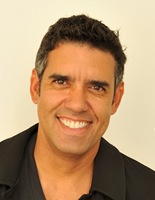
José González, partner, Revolucion
“In many countries, the ferretería (hardware store) is part of the local community where you’re always helped and can get in and out quickly,” said José González, partner, Revolucion in a press release. Ace is the place where Latinos can have that same customer experience in the U.S. and these spots convey that relevant message.”
In the Manifesto TV spot, a man is standing in a big box store looking frustrated and confused. The voice-over asks, “¿Qué pasó con la ferretería de la esquina? ¿Con la persona que estaba allí para ayudarte?” (“What ever happened to the corner hardware store? To the person who was always there to help you?”). The TV spots all end with the statement: “Menos tiempo dando vueltas. Más tiempo para lo importante.” (“Less time running in circles. More time for what’s important.”).
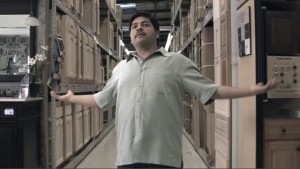
A scene from the new Ace Hardware Spanish language ads
The Revolucion team for the Ace Hardware campaign was Jose Gonzalez, partner, chief strategy officer; Federico Mejer, Partner; Roberto Alcázar, executive creative director; Henry Alvarez, art director; Pilar de Posadas, executive producer; and Ana Paz, senior account executive.
Ace Hardware has 4,500 locally owned and operated hardware, home center and building materials stores, making it one of the largest hardware cooperatives in the industry. Headquartered in Oak Brook, Illinois, Ace operates 14 distribution centers in the U.S. and one in Shanghai, China. Its retailers’ stores are located in all 50 states and more than 60 countries.
Comments:
Filed Under: Video
Posted by Elena del Valle on May 7, 2010

Emotional Branding
Photos: Allworth Press
In the updated and revised edition of Emotional Branding the new paradigm for connecting brands to people (Allworth Press, $19.95), a 325-page softcover book published in 2009, Marc Gobé discusses society’s migration from objective to subjective thought and rationality to desires and how it affects branding.
He examines the power of social media and the reasons he believes the way we do business is changing thanks to the Web. In the book he includes mentions of market segments such as Baby Boomers, generations X, Y and eXel, gays, and women. In Chapter 2 (pages 29 to 42), he discusses the American Melting Pot, specifically African-Americans, Asian-Americans and Hispanics.
Although he indicates that almost all industries should target U.S. Latinos he highlights eight areas where Hispanics tend to outspend non Hispanics: Food consumed at home, apparel, telephone services, rental housing, TV/radio equipment, personal care products, public transportation and cleaning supplies. He points out that brand managers need to understand what issues are most important and influential among Latinos to target their aspirational interests.
The book is divided into three sections and 15 chapters. The sections are Relationship – customer, customer, customer; and Sensorial experiences – the unchartered territory of branding; Imagination – innovation is a brand’s best friend.

Author Marc Gobé
Gobé is president of Emotional Branding, LLC, a New York think tank and consulting firm dedicated to creating “content for online experiences.” He co-founded and is former chief executive officer of Brandimage (formerly Desgrippes Gobé). The designer, photographer, filmmaker, and public speaker who dedicates his time to connecting brands emotionally with people in a positive way also authored Brandjam and Citizen Brand.

Click here to buy Emotional Branding
Comments:
Filed Under: Books
Posted by Elena del Valle on May 5, 2010

An iPhone
Photos: Apple, Motorola
Once upon a time there was print media. Then came radio and television. The Internet changed our world and marketing along with it. Now we can listen to some radio programs and watch television shows online whenever we want. The media have fragmented.
That’s before even mentioning ethnic media outlets. Or, dare I say it, the newly available and much anticipated iPad which threatens to change book and magazine publishing, among other things. At the same time, there is a device nearly everyone has and carries with them most of the time, cellphones. Mobile phones have become ubiquitous in our country and in many parts of the world, presenting a wide open marketing window of opportunity.
By the end of this year, there will be 5 billion mobile phone subscriptions world wide, according to a February 18, 2010 The Economist online article. Many mobile phone conversations are lasting longer than they did in the past. Ten years ago cellphone users spoke for an average 174 minutes a month, according to the GSM Association, an industry group. That average had reached 288 minutes by September 2009.

A Motorola Droid
Some places have chattier users that others. For example, people in Puerto Rico talk the most, 1,866 minutes according the GSM Association. This may be because cheap plans include unlimited calls to the American mainland where family and friends are often based. On the continent, Americans are using 835 minutes (including incoming minutes paid for by the subscriber). Others among at the top of the list of heavy users are Hong Kong, China, Uzbekistan, Singapore, India, Canada, Israel, and Belarus. The three lowest users? Sao Tome and Principe, Cambodia and Philippines.
Who is using mobile phones in America? It seems everyone old enough to use one has a phone or some people have more than one. In the three month average ending in February 2010, 234 million Americans 13 years of age and older were mobile subscribers, according to comScore MobiLens data released last month. Since there are just over 300 million people living in the United States including babies and children, 234 million is a high percentage of the population that is capable and old enough to have a phone.
Although the comScore study does not breakdown use by ethnic group, US Hispanic Use of Telecommunication Services 2006 – 2011, a market research report by The Insight Research Corporation, examines mobile phone use by blacks, Hispanics and Asians in the United States. That organization’s researchers estimated that one out of every three dollars spent on telecommunications services in 2009 would be purchased by domestic ethic communities.
A March 2009 Scarborough Research report indicates Hispanics like cellphones, are more likely than the average person to have a cellphone, and outspend many others on cellular usage. Members of this market segment also tend to use the phone’s functions beyond talking, often taking advantage of picture taking, text messaging, email, Internet access and downloading applications.
Posted by Elena del Valle on May 3, 2010
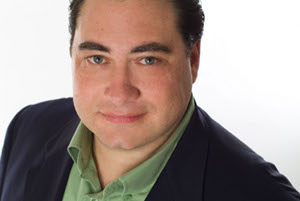
Marcelino Miyares, director, Mercury en Español
Photo: Mercury en Español
A podcast interview with Marcelino Miyares, Jr., director, Mercury en Español is available in the Podcast Section of Hispanic Marketing & Public Relations, HispanicMPR.com. During the podcast, Marcelino discusses direct response marketing to Latinos in the United States with Elena del Valle, host of the HispanicMPR.com podcast.
Marcelino has expanded Mercury en Español which is one of the first full service Hispanic direct response specialty practices in the U.S. In his role as a strategic planner and media director, he has developed marketed communications programs for Body-by-Jake, Citibank, MCI, Signature Group, Montgomery Ward, PepsiCo, Ameritech, Philip Morris, PharMor, and American Stores, among others.
Marcelino began his career as media director and account planner for UNIMAR in Chicago. He built extensive retail marketing and telecommunications experience as a Strategic Planner. In 1991, he moved to Los Angeles and co-founded Tamayo Miyares Advertising, a marketing communications firm specializing in campaign integration for U.S. Hispanic markets.
To listen to the interview, scroll down until you see “Podcast” on the right hand side, then select “HMPR Marcelino Miyares” click on the play button below or download the MP3 file to your iPod or MP3 player to listen on the go, in your car or at home. To download it, click on the arrow of the recording you wish to copy and save it to disk. The podcast will remain listed in the April 2010 section of the podcast archive.
Posted by Elena del Valle on April 30, 2010

Immigrant, Inc. Why Immigrant Entrepreneurs Are Driving the New Economy
Photos: John Wiley & Sons, Inc.
Myriad uber famous companies were founded by immigrants to the United States. Examples include Google, Intel, Yahoo, Hotmail, YouTube, Sun Microsystems and ebay. In 2010, immigrants in the United States are almost twice as likely as non immigrants to establish a business. Immigrants are behind more than half the new high tech businesses in Silicon Valle; and they are more likely to earn an advanced degree, receive a patent or create an invention, according to the authors of a newly published book.
Richard T. Herman and Robert L. Smith point out that amidst all the controversy over undocumented immigrants many people overlook the critical contributions of legal immigrants to America’s business environment and economy. The immigration and business law attorney and journalist specializing in immigration issues, both Ohio residents, authored Immigrant, Inc. Why Immigrant Entrepreneurs Are Driving the New Economy (and how they will save the American worker) (Wiley, $29.95), a 226-page hardcover book about the importance and accomplishments of immigrants published in 2010.
They believe some immigrants arrive primed with ambition, education, thrifty attitudes, and family loyalty to launch their entrepreneurial dreams and find success. In turn they create businesses and jobs that fuel our economy and help our country thrive at a noteworthy rate.
The authors dedicated 10 chapters to the topic, exploring the motivations and qualifications of immigrants and examining individual immigrant’s stories. The chapters are: A Mighty New Idea; The Mounting Evidence; A Land of Opportunity, Still; Restless Dreamers; Earth’s Best and Brightest; Cowboys of a New Frontier; Desperate Achievers: Prequel to Google; Importing Solutions; The Stimulus We Need; and Thinking Like an Immigrant.

Co-author Richard T. Herman

Co-author Robert L. Smith
Herman is the founder of Richard T. Herman and Associates, an immigration and business law firm in Cleveland, Ohio. He is also the co-founder of a chapter of TiE, a global network of entrepreneurs. Smith writes about international culture and immigration for The Plain Dealer, one of the largest newspapers in Ohio.
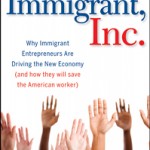
Click here to buy Immigrant, Inc.
Comments:
Filed Under: Books
Posted by Elena del Valle on April 28, 2010
By Astrid Rial
President, Arial International
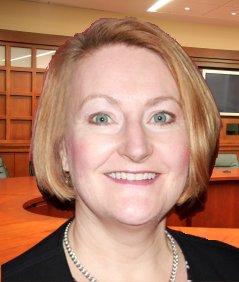
Astrid Rial, president, Arial International
Photo: Arial International
Companies who recruit bilingual talent to service Spanish-speaking customers seek associates who can effectively communicate in both English and Spanish. In the last few years we have observed that many more companies in the U.S. are providing additional compensation in the form of a bilingual premium or differential to bilingual associates.
Many Spanish speakers in the US speak colloquial or familiar Spanish, so the challenge for recruiters is to objectively verify that bilingual job candidates are able to competently communicate in professional and appropriate Spanish for business situations. Unless an interviewer is fully fluent in both languages, it is difficult, if not impossible, to distinguish between casual and business Spanish.
Click here to read the complete article Recruiting and Remunerating Spanish Speakers
Posted by Elena del Valle on April 26, 2010

Bilda Acuña, vice president, Unum Hispanic initiative
Photo, video: Unum
Unum, a provider of employee benefits products and services in the United States and United Kingdom, decided recently to offer Spanish dominant Hispanic customers information, in Spanish online and on DVD, about some of its offerings. Last month, the company which has 12 million customers, including 240,000 Spanish speakers, in the United States, announced a series of educational videos in Spanish about its employee benefits products and services.
This is the first time the insurer produces informational videos for customers in a foreign language in the United States. Additional videos are planned for new products. Scroll down to watch a sample 3.5 minute Spanish language video.
“Instead of a literal translation of existing materials, we’re starting fresh so we can be more relevant to the Hispanic demographic. The Hispanic population is growing faster than any other ethnic minority,” said Bilda Acuña, assistant vice president of Unum’s Hispanic initiative.
Citing Pew Research Center data estimating that within two decades, the Hispanic share of the workforce will more than double to 31 percent; and the company’s belief that Hispanic employees are not always familiar with insurance products because the benefits were not offered in their country of origin, they believe they are a luxury product or that the benefits are provided by the government the company decided to create a collection of materials for Spanish-speaking customers.
Toward this goal Unum dedicated nine staff members, nine months and an undisclosed budget to the production of the new visual materials in Miami, Florida. The videos, available on DVD and online, will be used during enrollment times when employees learn and sign up for their workplace benefits. These are the first videos Unum has produced in Spanish.
“One quarter of Unum’s customers have Spanish-speaking employees, and it is important for us to create a benefits education approach that is as relevant and effective as possible, especially for this expanding demographic group,” said Acuña. “Many insurance companies are making an effort to reach the Hispanic market, but Unum is unique in that we are creating our pieces from scratch. Instead of a literal translation of existing materials, we’re starting fresh so we can be more relevant to the Hispanic demographic.”
Unum hired Marca, a Miami-based advertising agency company that specializes in Hispanic marketing, to assist with the production of the 11-video series designed in easy-to-understand terms. The videos feature Unum’s core products: group and voluntary life insurance; group and individual short term disability insurance; group long term disability insurance; and supplemental insurance, including Accident, Critical Illness and Cancer Insurance.
The videos are the company’s latest effort to target Spanish dominant Hispanics. Over the past year, Unum has directed some efforts to customer service for Spanish-speaking consumers such as: increasing the number of bilingual benefits counselors across the country to help customers enroll in Unum’s products and services; interviewing 86 percent of Spanish-speaking employees in their preferred language; and adding a bilingual benefits team in California to handle claims for Hispanic customers. One hundred Hispanics are employed at Unum.
Comments:
Filed Under: Video
Posted by Elena del Valle on April 23, 2010
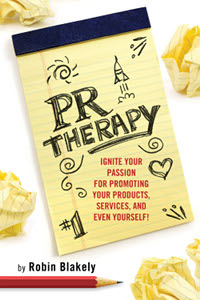
PR Therapy book cover
Photos: Quill Driver Books
In PR Therapy: Ignite Your Passion for Promoting Your Products, Services, and Even Yourself! Robin Blakely, a New York City public relations consultant, dedicates 180 pages to help readers build a public relations platform for their businesses. She focuses on print, broadcast and live media options.
In the book, she examines basic issues like the need to make changes in existing patterns of behavior, identifying assets and liabilities of the person or brand to be promoted, options available, and narrowing the target audience for starters. She shares suggestions, based on her experiences and that of colleagues, readers may want to consider to address the challenges they face along the way to promoting their business and brand.
The softcover book, published last year, is divided into six section she calls phases: Your Big Couch Trip, The RX to Analyze Your Audience, Picking and Approaching the Media, Your PR Empowerment Tools, The Media and Doing What It Takes, and Building on Your Success. These in turn are divided into what she calls sessions.
Blakely promises readers will have the tools to visualize and build a promotional base that allows them to connect with the most important areas of their market, select varied media venues to target, design the right tools for their business, understand what they need to know before beginning their promotional efforts in earnest.

A ten-year veteran in her field, Blakely is the founder of Livingston Communications, Inc. and a founding partner of Get There Media, a New York City company. She has secured promotional placements for clients at print, broadcast and live venues with HGTV, Book TV, ABC World News, and Vanity Fair among others.

Click here to buy PR Therapy
Comments:
Filed Under: Books




























